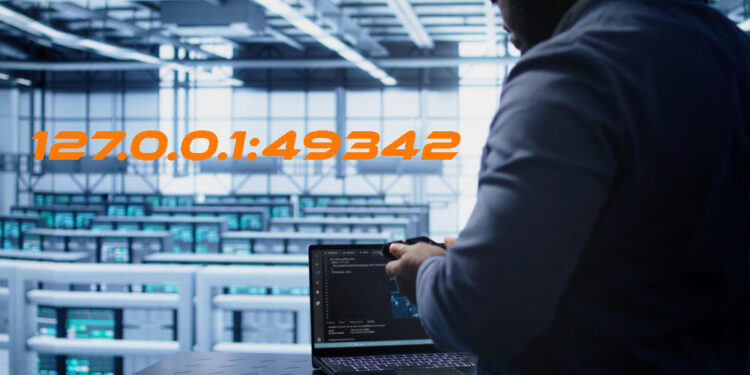In the vast expanse of network configurations and internet setups, local network issues can sometimes feel like a labyrinth of technical jargon and complex solutions. However, addressing these issues doesn’t have to be daunting. Whether you’re a seasoned IT professional or a casual user, understanding how to manage and troubleshoot your local network at the address 127.0.0.1:49342 can significantly streamline your digital experience. This article offers practical tips and insights to help you navigate common local network problems with ease.
Understanding 127.0.0.1:49342
Before diving into troubleshooting, it’s essential to clarify what 127.0.0.1:49342 represents. 127.0.0.1 is commonly known as the “localhost” address. It refers to the local computer you’re currently using. Every device connected to a network has this address, which points back to itself, allowing network software and applications to communicate internally.
The addition of :49342 specifies a port number, which is used by various applications to connect with other services running on the computer. In simpler terms, think of your computer as a giant apartment complex, and 127.0.0.1 is the address. The port number (49342 in this case) would be a specific apartment within that complex where certain activities (services) occur.
Common Local Network Issues
Several typical issues might prompt you to troubleshoot the localhost at this specific port. These include connectivity problems, service configuration errors, or security concerns. Here’s how to tackle some of these prevalent challenges:
1. Connectivity Issues
If you’re experiencing connectivity issues when attempting to access 127.0.0.1:49342, it likely indicates that the service intended to run on that port isn’t starting properly. Here are steps to diagnose and resolve this:
- Check Service Status: Ensure that the specific service configured to use port 49342 is running. You can check this using command line tools. For Windows, open Command Prompt and type: nginxCopy
netstat -aon | findstr :49342For macOS or Linux, open Terminal and type: cssCopysudo lsof -i :49342 - Review Application Logs: Most applications will generate logs that can provide insights into what might be going wrong. These logs can typically be found in the application’s directory under a
/logssubfolder. - Firewall Settings: Sometimes, a firewall may block certain ports. Check your firewall settings to ensure that there are no rules preventing access to port 49342.
2. Service Configuration Errors
Misconfigurations in service settings can also cause issues. Here’s what you can do:
- Configuration Files: Check the configuration files of the application using port 49342. Ensure that all settings, especially those pertaining to network configurations, are correct.
- Dependencies: Verify that all necessary secondary services or databases that your application depends on are up and running.
3. Security Concerns
Security is crucial, especially when dealing with network configurations:
- Update Regularly: Ensure that your software and applications are up-to-date with the latest security patches.
- Use Strong Passwords: For any service that requires authentication, use strong, complex passwords.
- Monitor Network Traffic: Use tools like Wireshark to monitor the traffic on your local network. This can help you identify any unusual activity that might indicate a security breach.
Optimizing Network Performance
To enhance the performance of your local network, it is crucial to consider adjustments beyond basic setups. Tweaking TCP/IP settings can significantly improve the efficiency of data transmission. This involves adjusting settings such as the TCP window size, which can increase the amount of data transmitted before receiving an acknowledgment, thus improving the throughput. Furthermore, implementing Quality of Service (QoS) can prioritize network traffic, ensuring that important data reaches its destination swiftly and reliably.
Network hardware also plays a pivotal role in performance. Upgrading outdated components such as routers, switches, and network cards to modern, faster devices can dramatically reduce latency and increase data throughput. Another effective strategy is network segmentation. By dividing the network into smaller, manageable segments, typically through VLANs (Virtual Local Area Networks), you can reduce congestion and enhance security, making your network more efficient and easier to manage.
Enhancing Network Security

Securing a local network involves more than basic precautions; it requires a layered approach. Implementing Intrusion Detection Systems (IDS) can help monitor and respond to potential threats in real time. For sensitive information, using Virtual Private Networks (VPNs) ensures that all data transmitted to and from 127.0.0.1:49342 is encrypted, safeguarding against interception by unauthorized parties.
Moreover, conducting regular security audits is advisable. These audits help identify and address vulnerabilities, reinforcing the network’s defenses against potential attacks. This proactive approach not only secures the network but also instills confidence among users regarding the integrity and safety of their data.
Advanced Troubleshooting Techniques
For more complex issues, consider the following advanced troubleshooting techniques:
- Port Scanning: Tools like Nmap can help you scan your ports to determine which services are listening, and whether there are ports open that shouldn’t be.
- Network Simulation: Advanced users can simulate network conditions to test how applications respond to changes in the network environment.
- Consulting Logs at a Deeper Level: Sometimes, standard logs may not provide enough information. Look for verbose or debug logging options to gather more detailed data.
Conclusion
Troubleshooting local network issues at 127.0.0.1:49342 doesn’t have to be overwhelming. By understanding what this address and port number represent, and by methodically applying the troubleshooting steps outlined above, you can resolve most issues efficiently and effectively. Remember, the key to successful network management is patience and persistence. Keep a methodical approach, and you’ll navigate through network challenges with greater confidence and ease.
FAQs About Local Network Troubleshooting
Q1: What does 127.0.0.1 mean?
A1: 127.0.0.1 is the IP address designated for the localhost, i.e., the computer you are currently using. It is used to establish an IP connection to the same machine or computer being used by the end-user.
Q2: Why might I need to access a specific port like 49342?
A2: Specific ports are used by various applications to communicate. If you’re developing or using a software that specifies this port, you need to ensure it is accessible.
Q3: How can I tell if a port is blocked by a firewall?
A3: If you suspect a port is blocked, check your firewall settings. You can also use a tool like Telnet or PortQry to test port accessibility.
Q4: What should I do if I can’t find the logs?
A4: If logs are not in their usual directory, check the application’s documentation or settings to find out if the log location can be configured.
Q5: Are there security risks with keeping ports open?
A5: Yes, open ports can act as entry points for attackers if not secured properly. Always ensure that only necessary ports are open and are protected by strong security measures.
Stay connected for the latest news and updates on Topic News













